Andalucia, Spain - 2018
Back to the start of the Spain 2018 Report
Onto the next part of the Spain 2018 Report.
Day 3 : Cordoba
We were up early, wished our helpful hotel man goodbye and extracted the Fiesta from the tight car park.
We got out of Granada easily and took a leisurely morning drive to Cordoba along minor roads, making good progress away from the busier routes, but having time to take in some of the scenery as we went.
On arriving in Cordoba, we had real trouble finding our hotel. A road our elderly sat nav wanted to take us down was now pedestrianised, so we parked in an underground city centre car park and walked to the old part of city.
Our main aim in Cordoba was to visit the Meskita, a Mosque converted to a church after the fall of the Moorish regime.
We had a quick drink outside and then took the tour of the Meskita and bell tower.
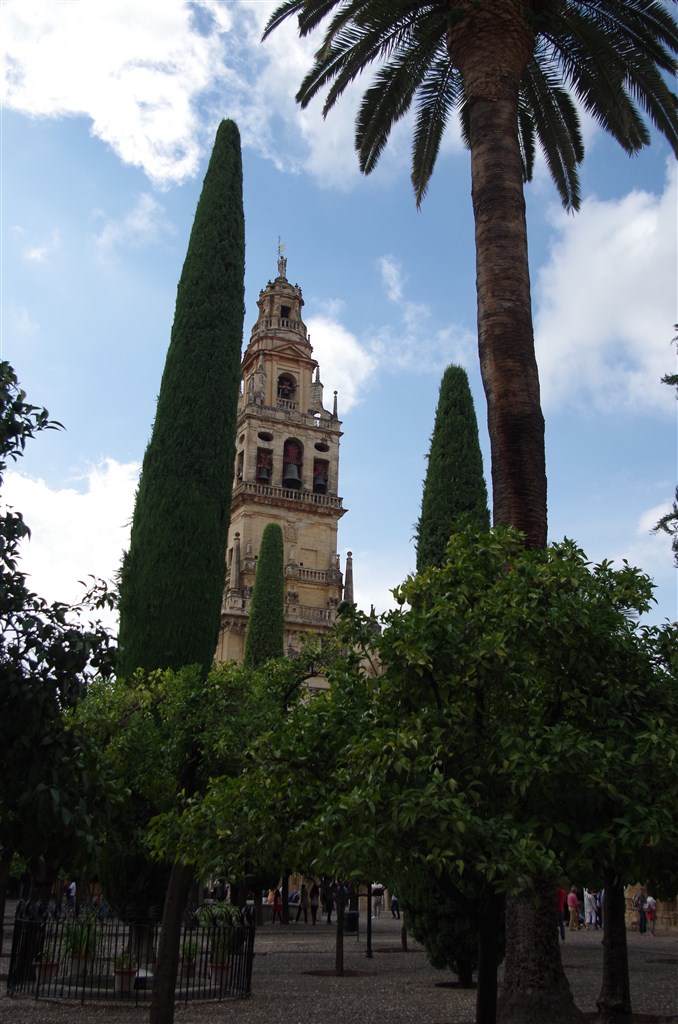
Bell Tower of the Meskita is actually as separate building
The Meskita was shut initially for a religious service, so we climbed the bell tower, passing by the old Minaret walled into the tower!
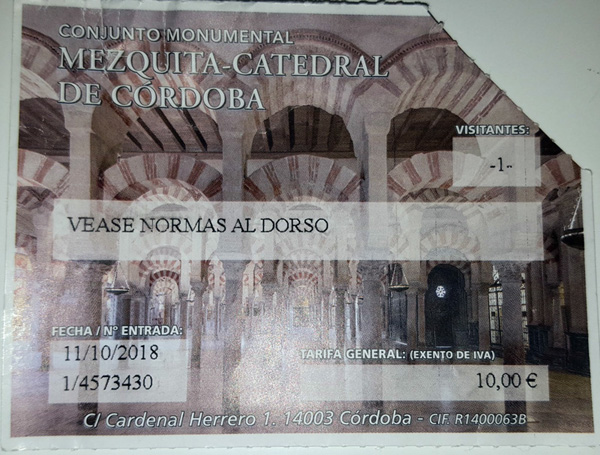
The view from the top was impressive, but it was pretty busy as the Meskita was closed, so everyone was doing the tower tour first!
We waited for a while in the large courtyard and them went in.
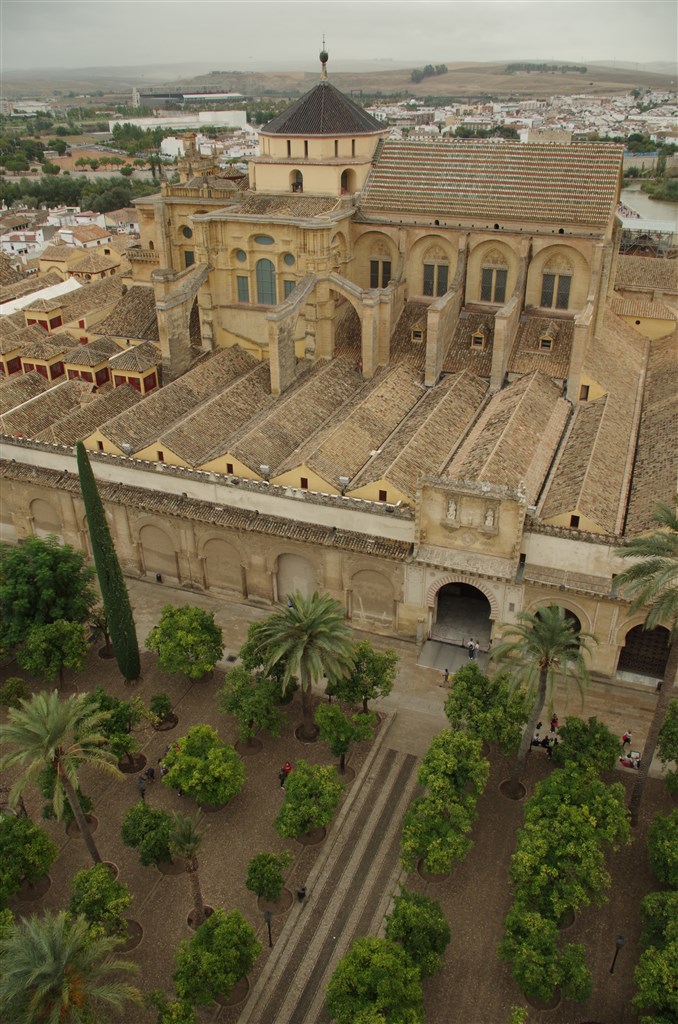
Meskita from Bell Tower
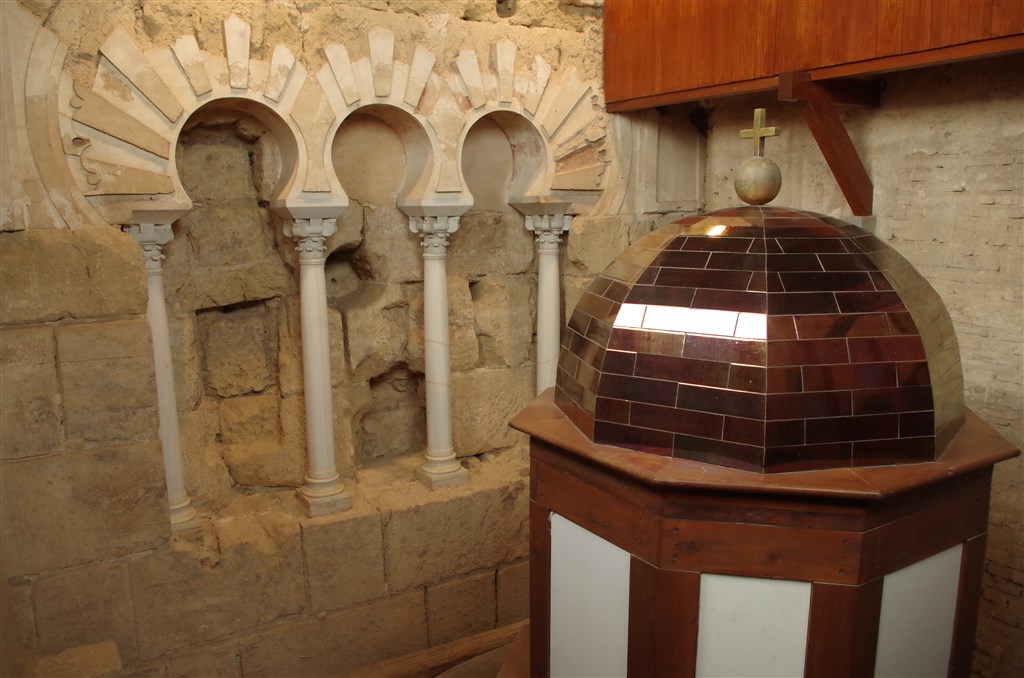
Minaret and windows from old Mosque walled into Bell Tower
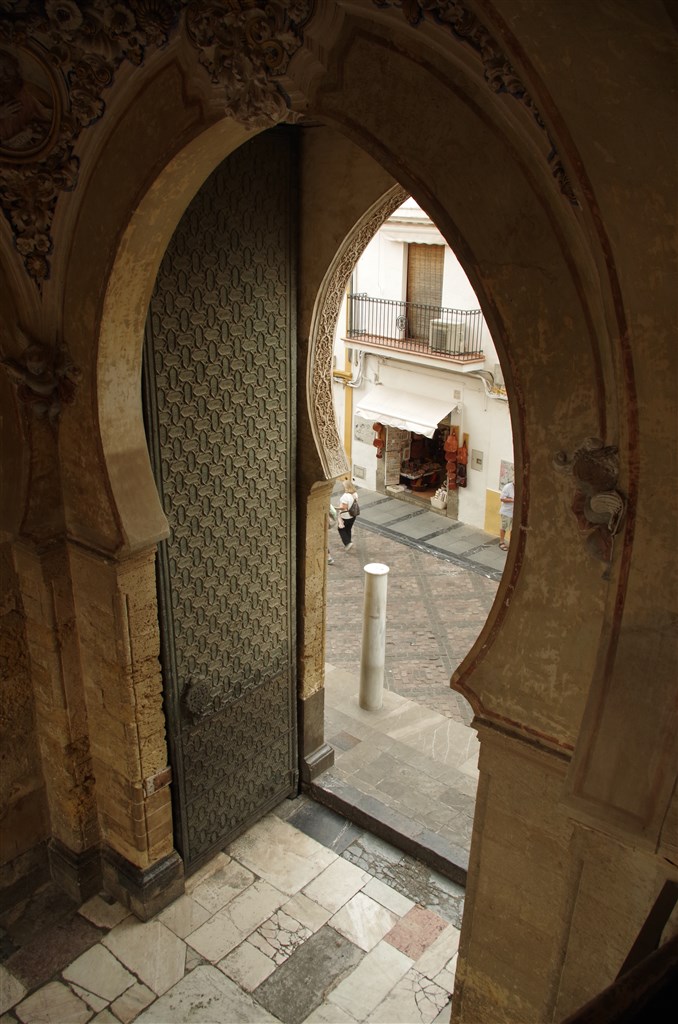
Imposing and beautiful archway entrance
What's unusual/noteworthy about the Meskita is that so much of it remains in the configuration it had as a Mosque. As you enter, you are in a vast open, vaulted area with two tone arches, it's really nothing like my idea of a church.
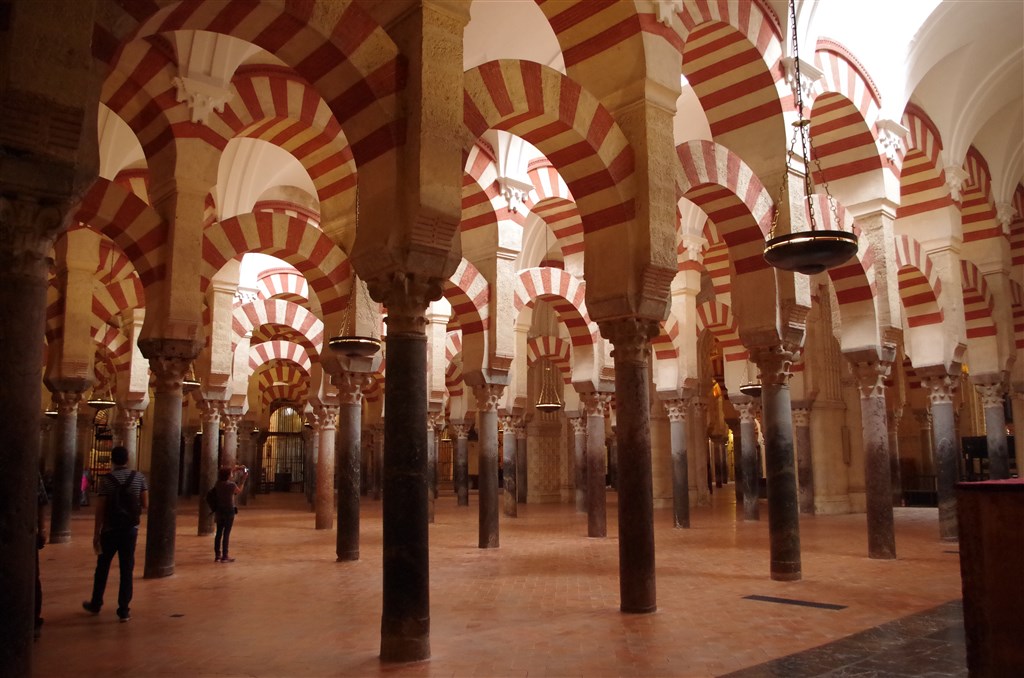
Stunning open area harks back to original Mosque...
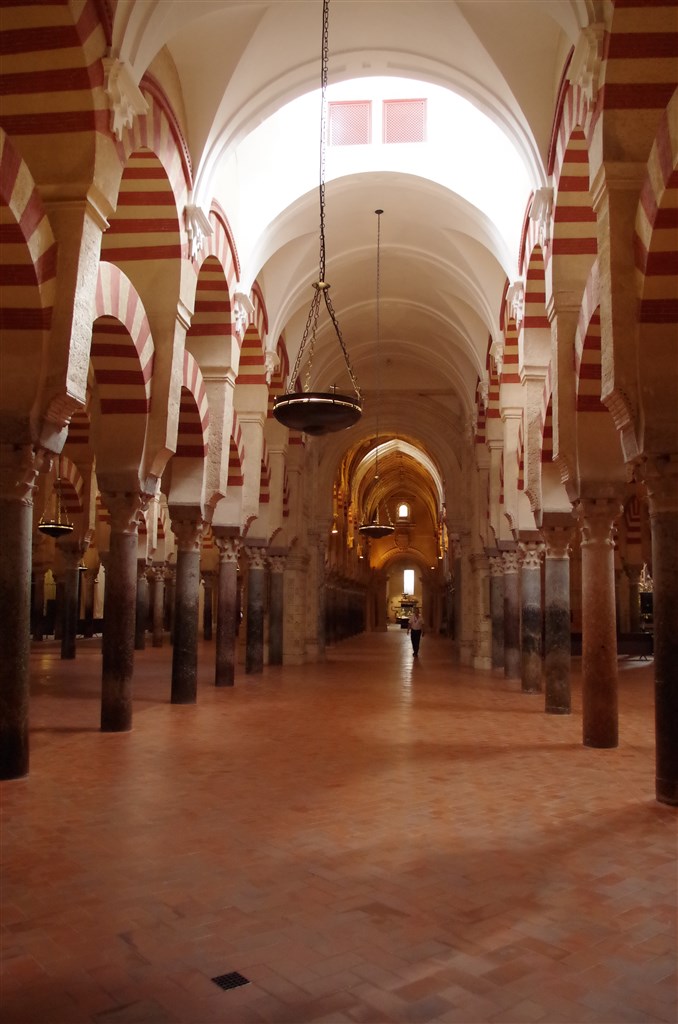
...and covers a large area.
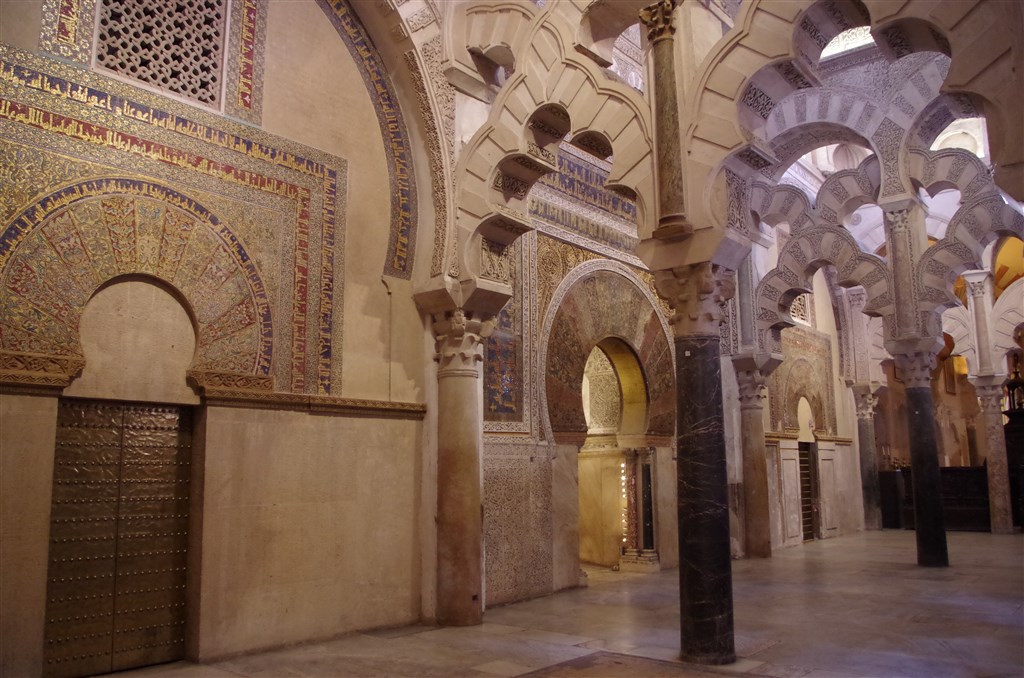
Beautiful mix of Islamic and Christian styles throughout.
As you move deeper in it becomes more traditonally a Christian church, with the kind of architecture you see in the big churches in northern europe, but the contrast is remarkable and the Meskita was one of my favourite spots we visited and by far my favourite of the churches.
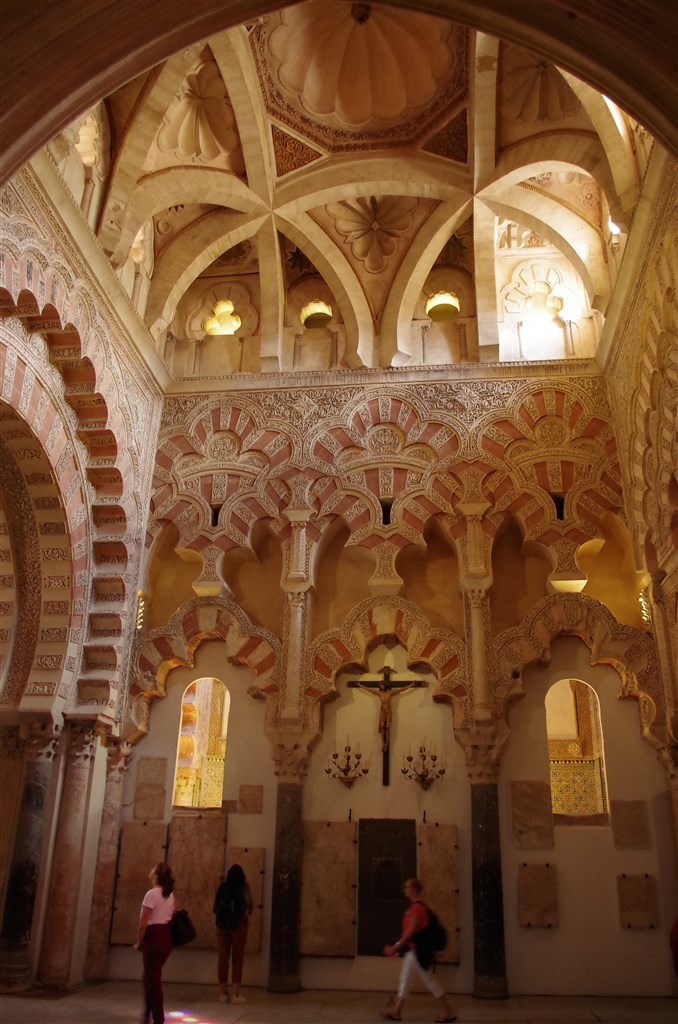
Islamic elements are everywhere...
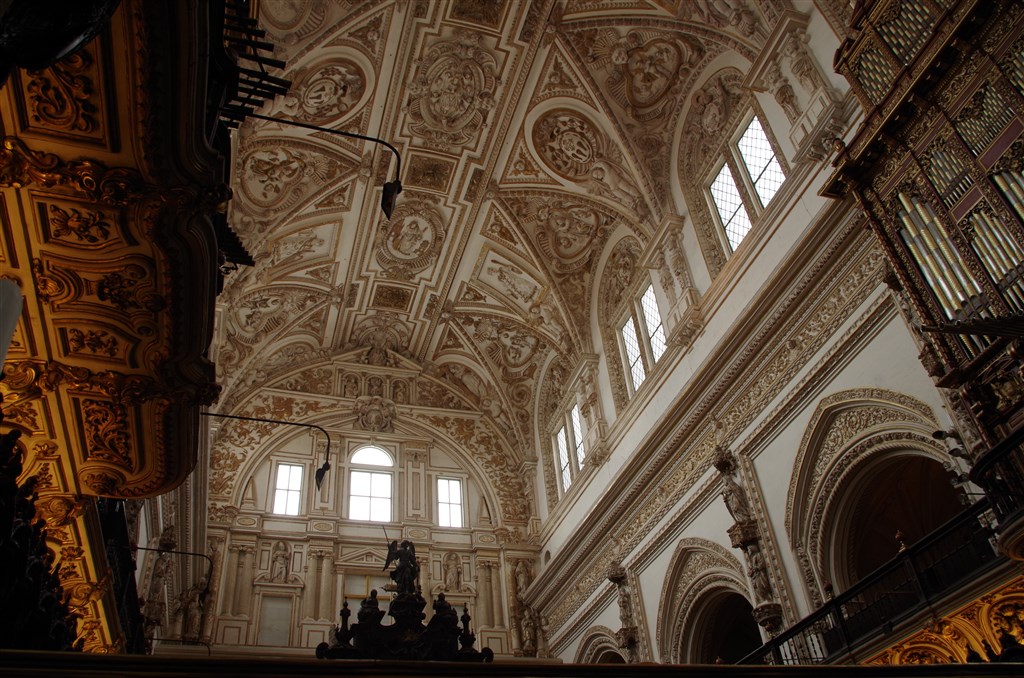
...but central part is more traditionally Christian.
After the Meskita, we headed down the twisty lanes of Cordoba's picturesque old town towards the castle.
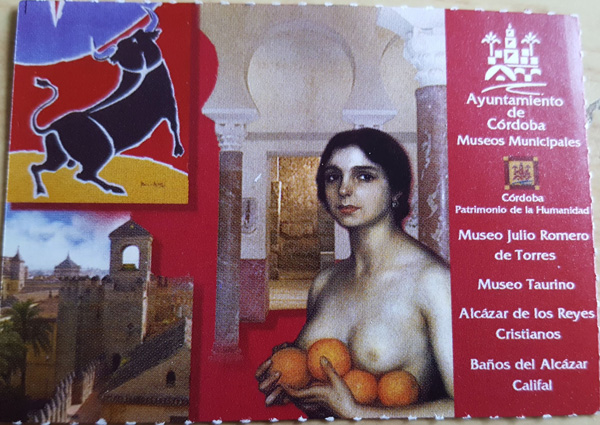
This isn't a large or imposing structure, but it's pretty complete and intact and also features some attractive gardens with large ponds full of large fish.
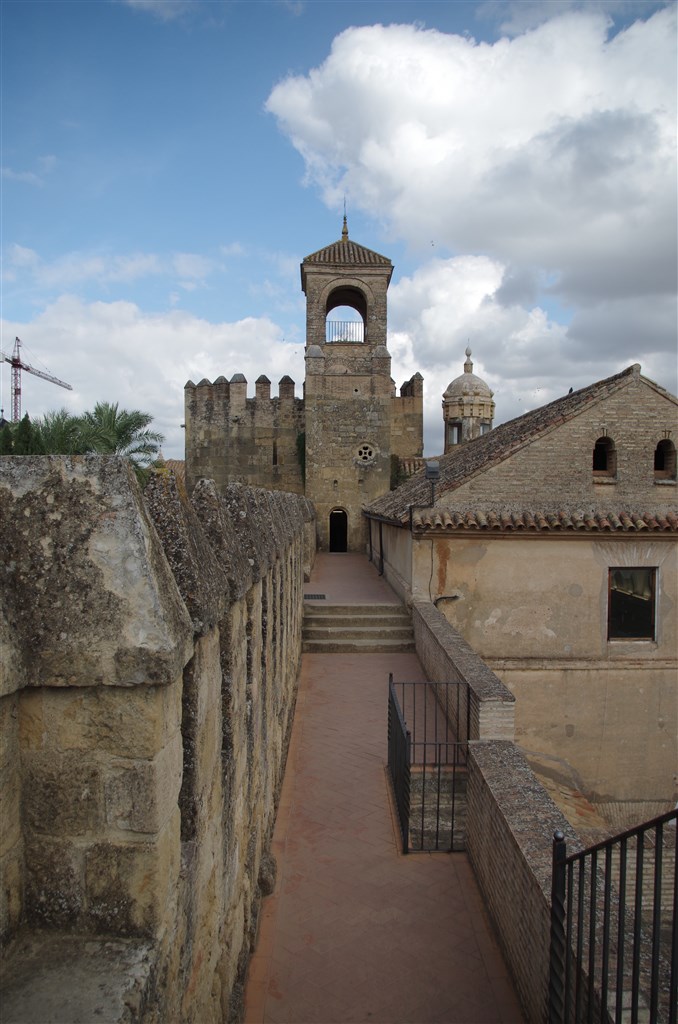
Ramparts of Cordoba's small castle
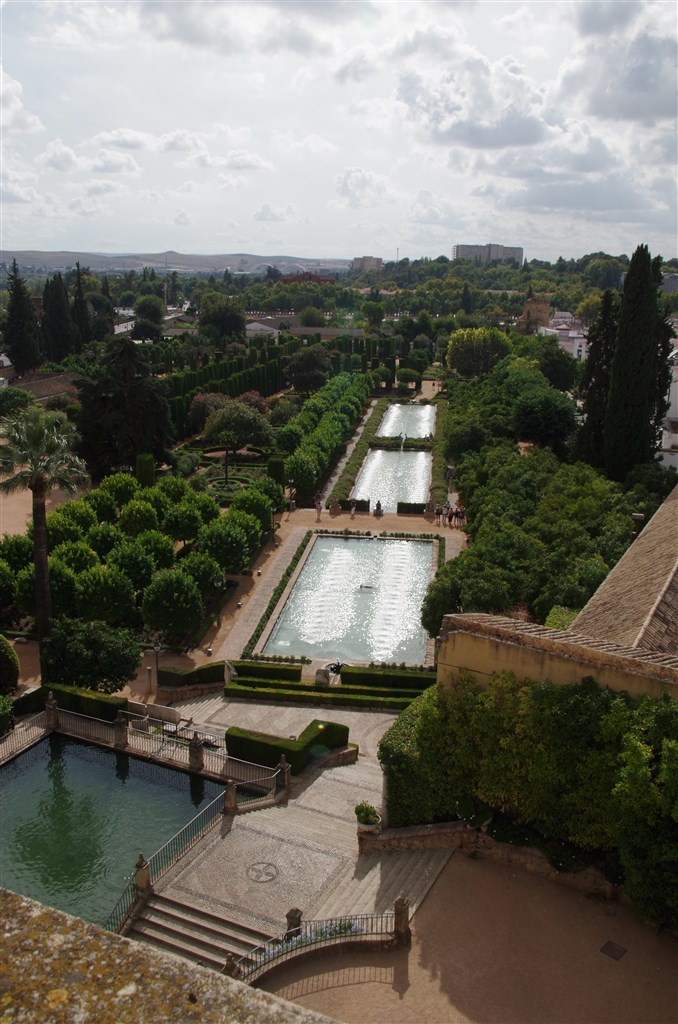
Impressive grounds, though.
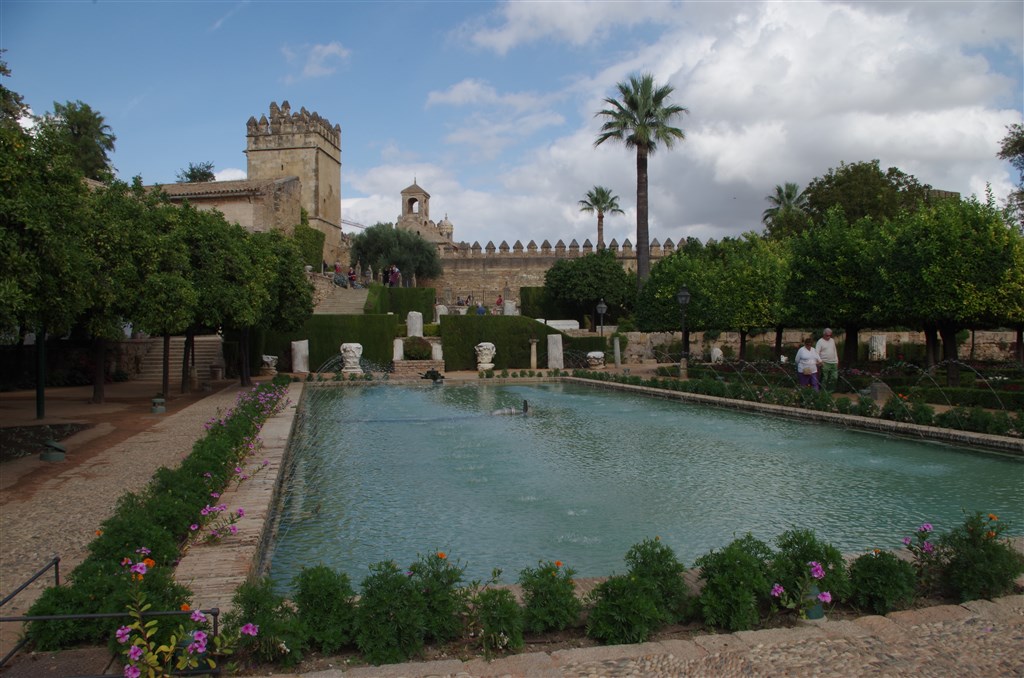
Castle viewed from one of the many ponds.
There are also a number of Roman mosaics on display here.
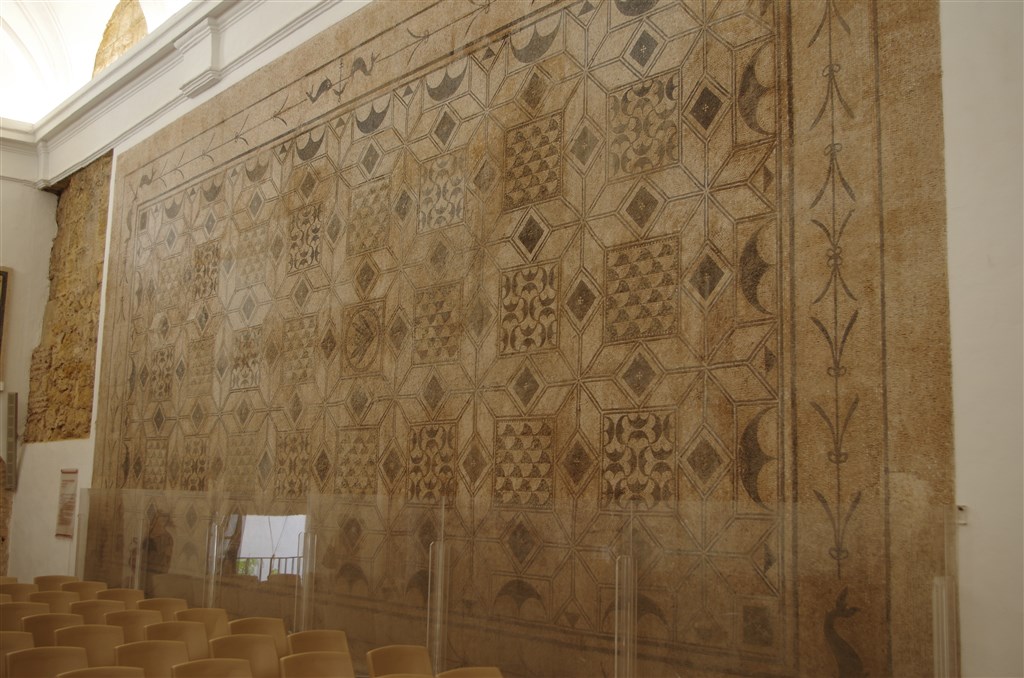
Roman mosaic on display in Castle.
Finally we visited the Moorish baths, just across the road from the castle.
At first we couldn't see where they were until we realised they're all below ground level.
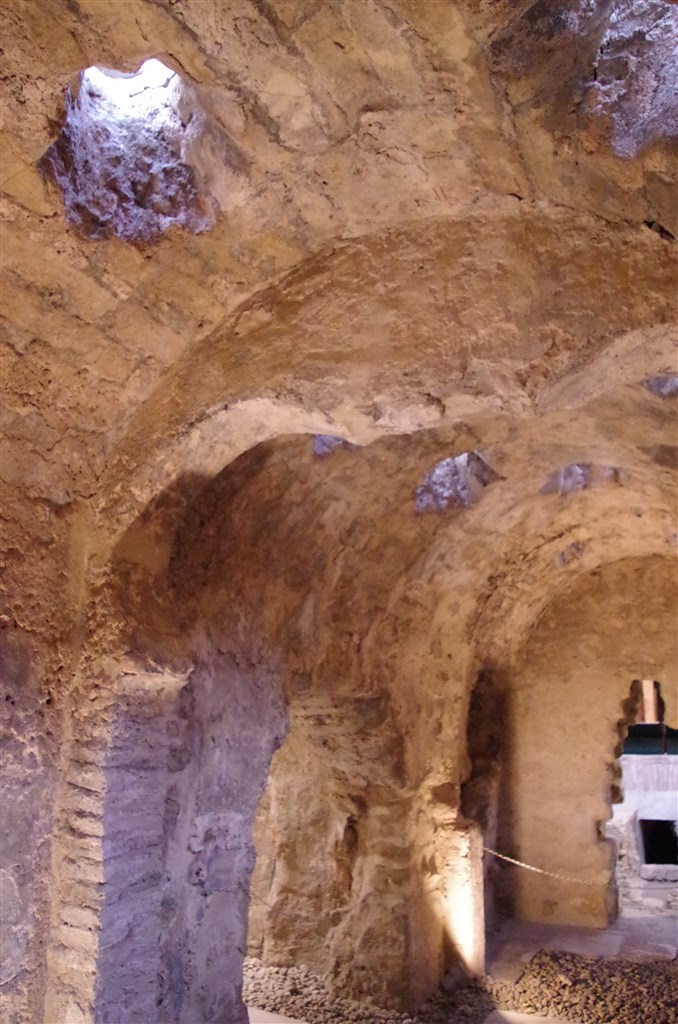
Inside the Moorish Baths
Moorish baths work pretty much the same as Roman ones with a hot and cold room and a 'tepid' room between them and you move between them. They also seem to have performed the the same social function. The layout of the rooms is clear to see in Cordoba, but there's nothing to speak of in terms of decoration, but they aren't expensive to visit and worth a look if you're there (The ones in Ronda, though, if you're visiting both towns, are better).
We grabbed an ice cream as the temperature climbed and walked back to the car to get our luggage and find the hotel, which turned out to be pretty close to where we'd parked in the end.
Our hotel room was bigger than in Granada, with a nice view over a square, but the beds proved less comfortable.
That evening we ate a fried fish platter meal in a restaurant on the square, which was pretty good!
Next morning we ate a imple breakfast for 3 Euros in the hotel, which was perfectly acceptable and got us going early enough to head to Seville.
12,894 Steps
Day 4: Seville
The next morning, we drove to Seville.
To be honest, we didn't really know what we were aiming to see in Seville, but it seemed that the Cathedral was the thing mentioned in all the guide books, along with the Real Alcazar, another Moorish palace.
Seville is a big town and we decided it would probably be best to park on the outskirts and travel in on the city's Metro.
By fantastic map reading on my part (I say) or blind luck (Mandy says) we found the Blas Infanta metro station with a free car park with ease and took it to Plaza Jerez.
This was a few minutes walk from the area where both the Real and the Cathedral were, but we passed the two towers on the river on this walk and then passed through an old city gate into the old area.
After a quick drink we looked and realised there were long queues for both the Castle and the Cathedral, with the latter being slightly shorter, so we joined that.
As we entered the gates around the Cathedral we were greeted by a statute of a winged woman. It turns out that this is a replica of the lightning conductor on the roof. It was made to fit on the tower, while the original was restored and then put on display at the entrance for everyone to get a closer look.
The Seville Cathedral was, when built 'the largest church in Christendom', so built that 'people would think themselves mad to imagine building a larger one'!
It is certainly huge and impressive and, like Cordoba, built open an existing Mosque, but unlike Cordoba, the muslim elements are far fewer and the magnitude of the Christian part of the Cathedral is so immense that it dominates.
The upshot of this, for me, was that although it's undeniably impressive, because it looks much more like a scaled up northern European church than Cordoba, that it didn't seem as remarkable.
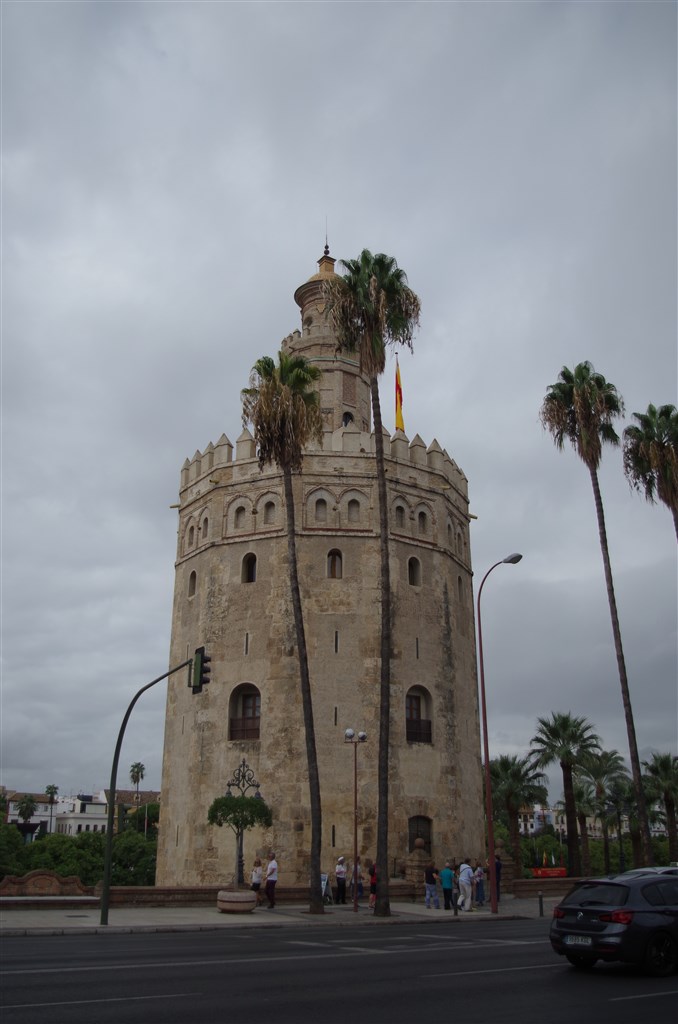
One of the riverside towers
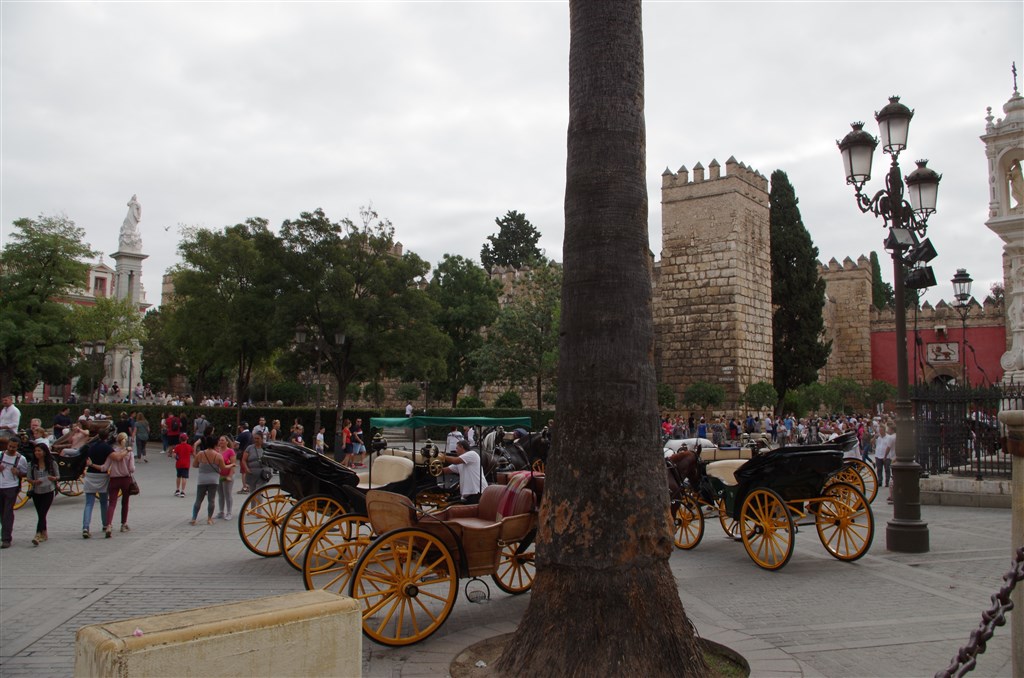
Horse drawn carriages in the square where the Cathedral and Real Alcazar are.
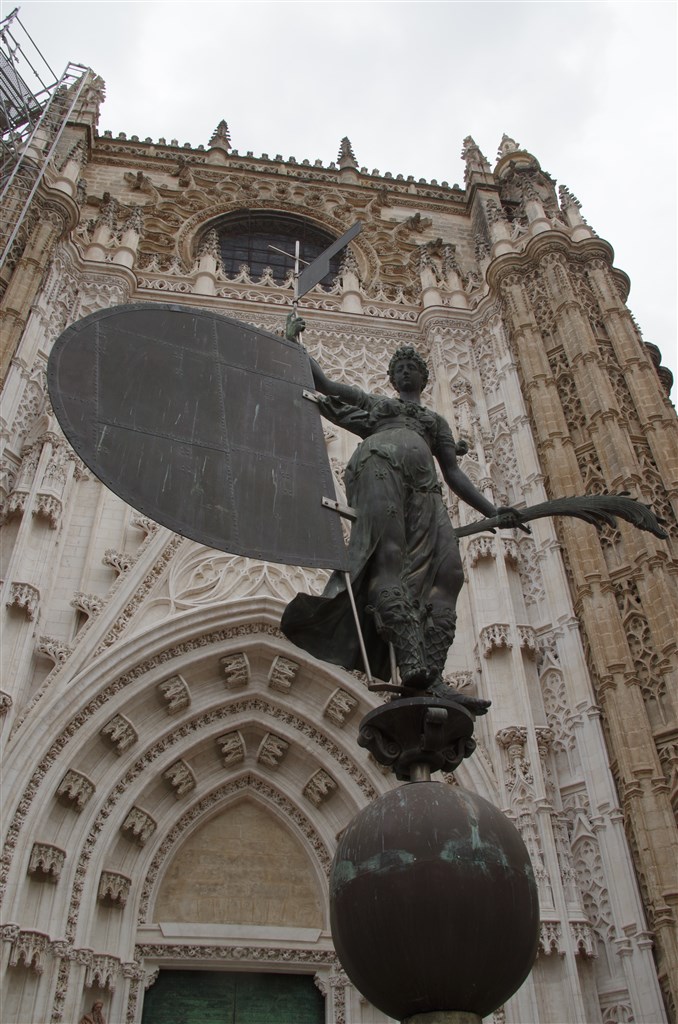
Lightning conductor statue.
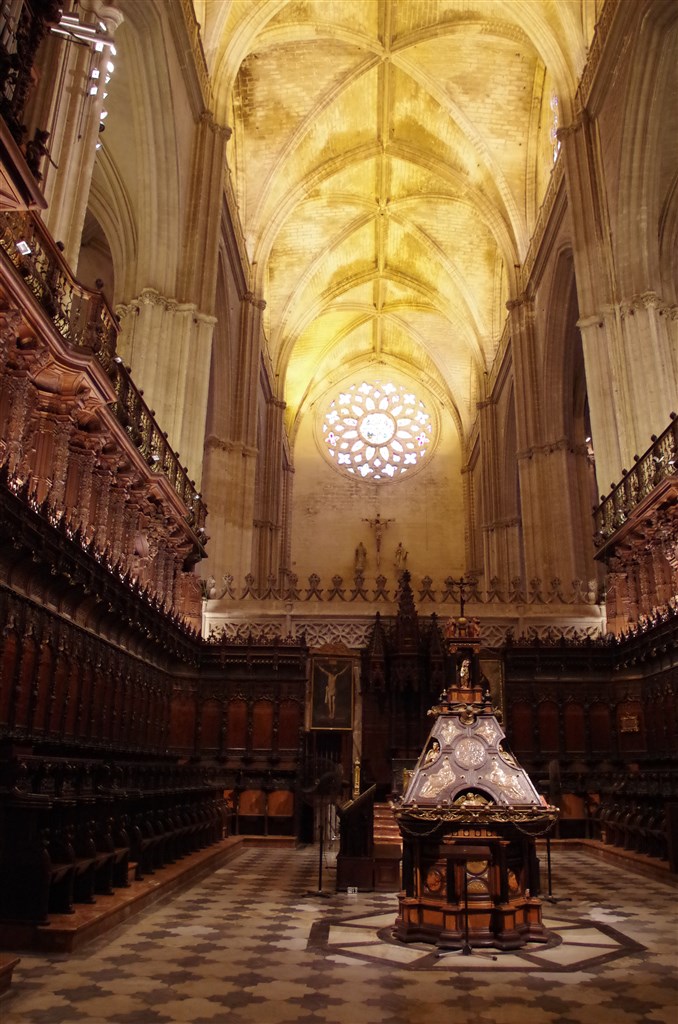
Cathedral is huge and impressive, but traditioanlly Christian in the main.
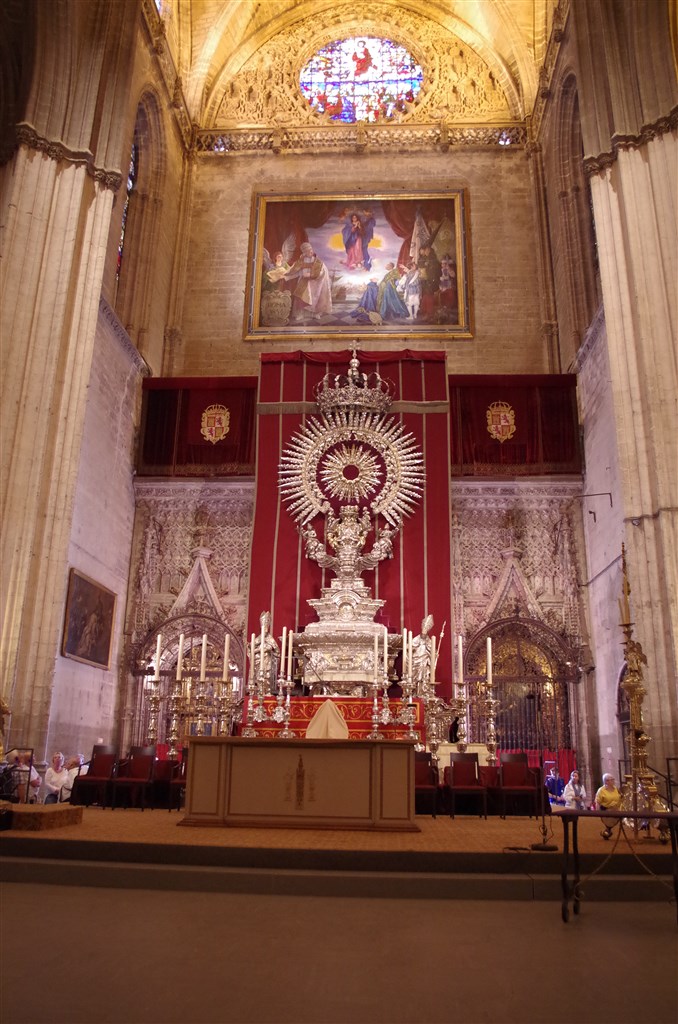
Plenty of gold and silver (this is the Silver Chapel), no doubt plundered from South America.
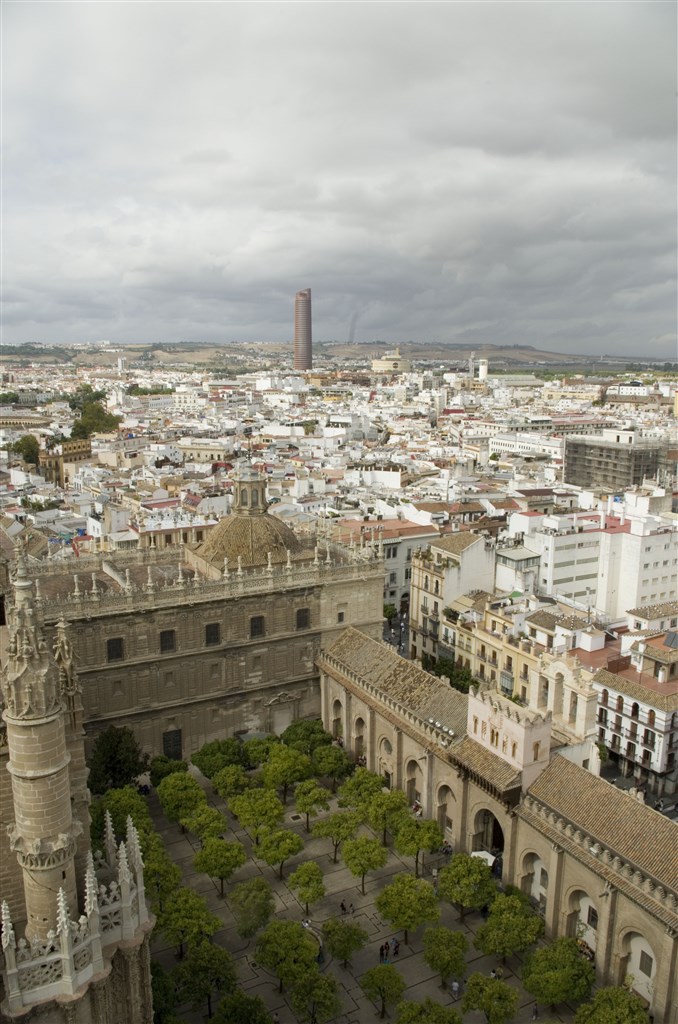
Cathedral courtyard and further from the tower.
We made the fairly arduous climb up the tower, where the lightning conductor statue sits (sadly being partly repaired, so obscuring some undoubtedly great views), passing a number of small rooms, one containing an ancient clock.
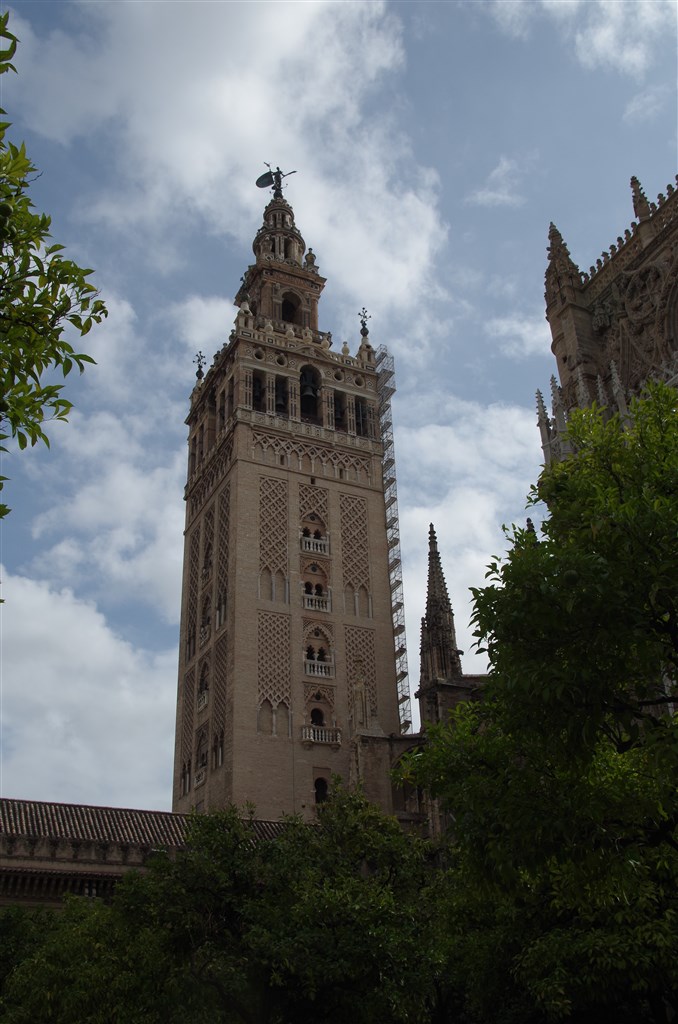
The tower from the ground, with the original of that statue in place.
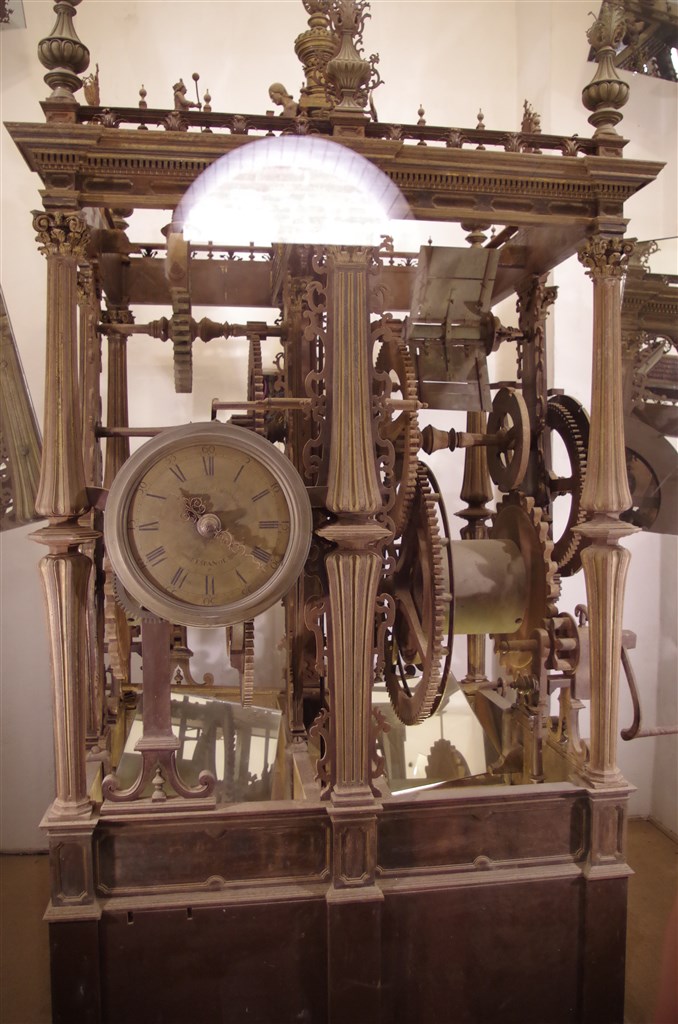
Ancient clock within the tower.
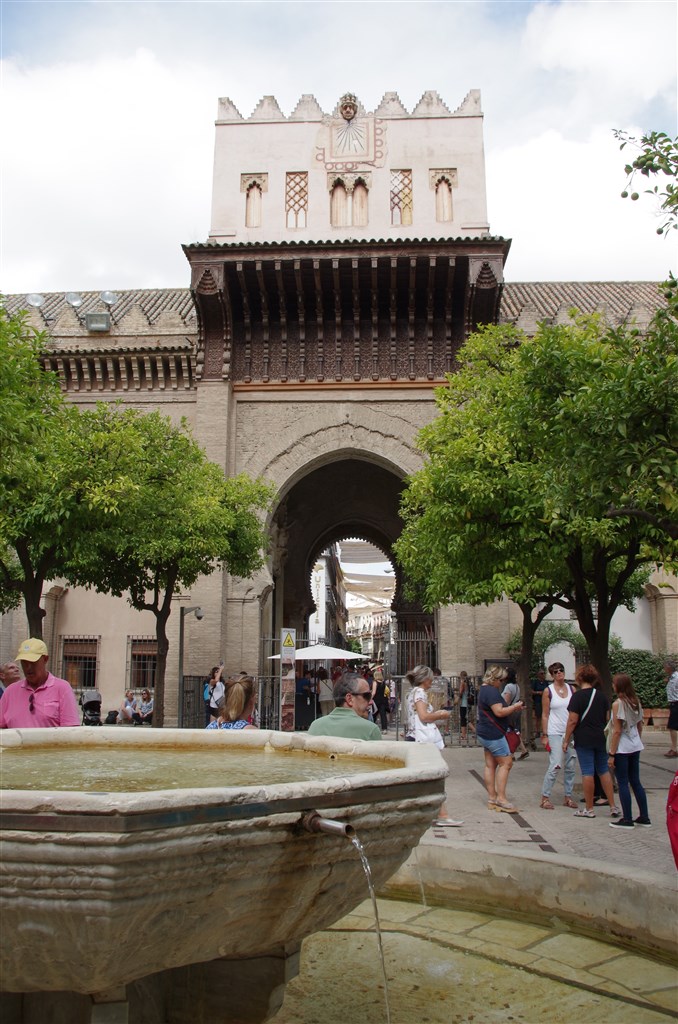
Courtyard harks back to Moorish times.
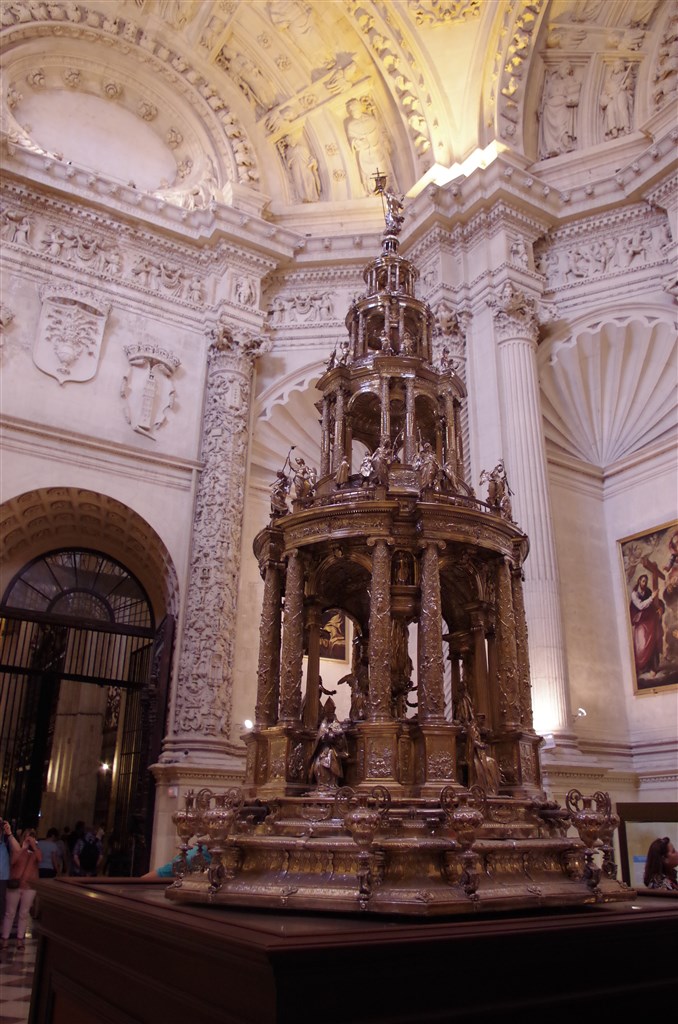
Huge silver processional piece.
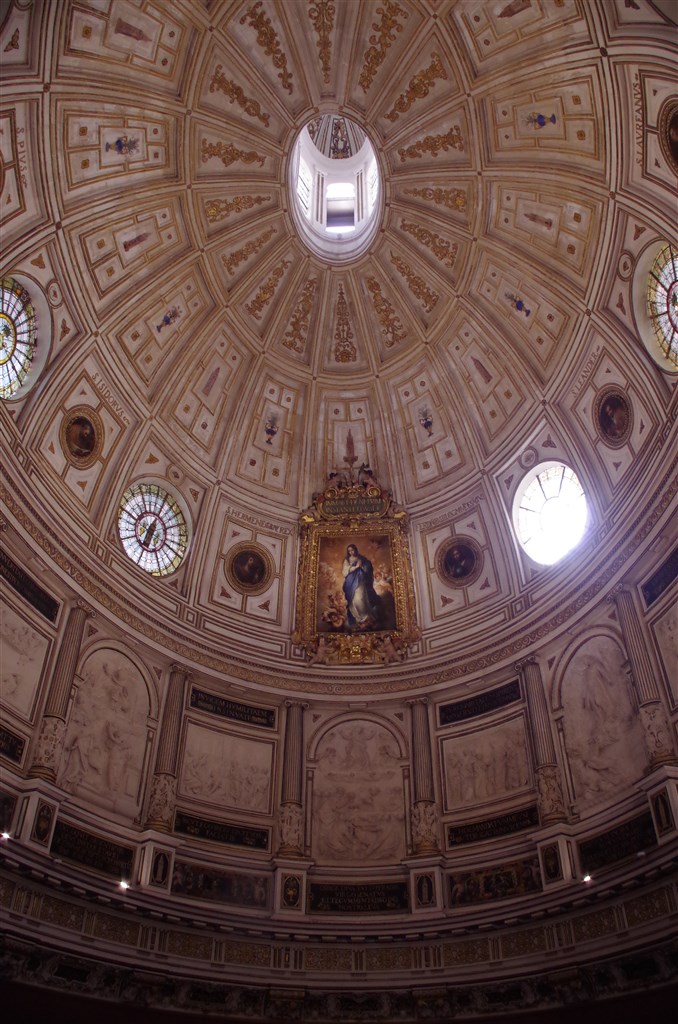
Massive dome in part of the Cathedral
An impressive tomb turned out to be that of Christopher Columbus.
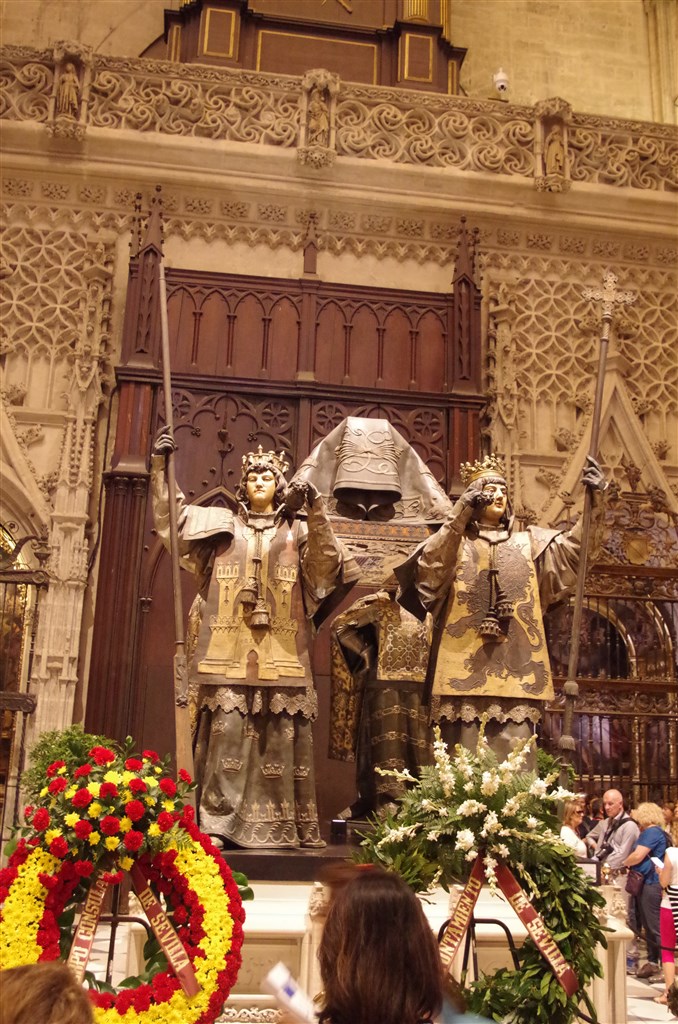
Columbus' tomb.
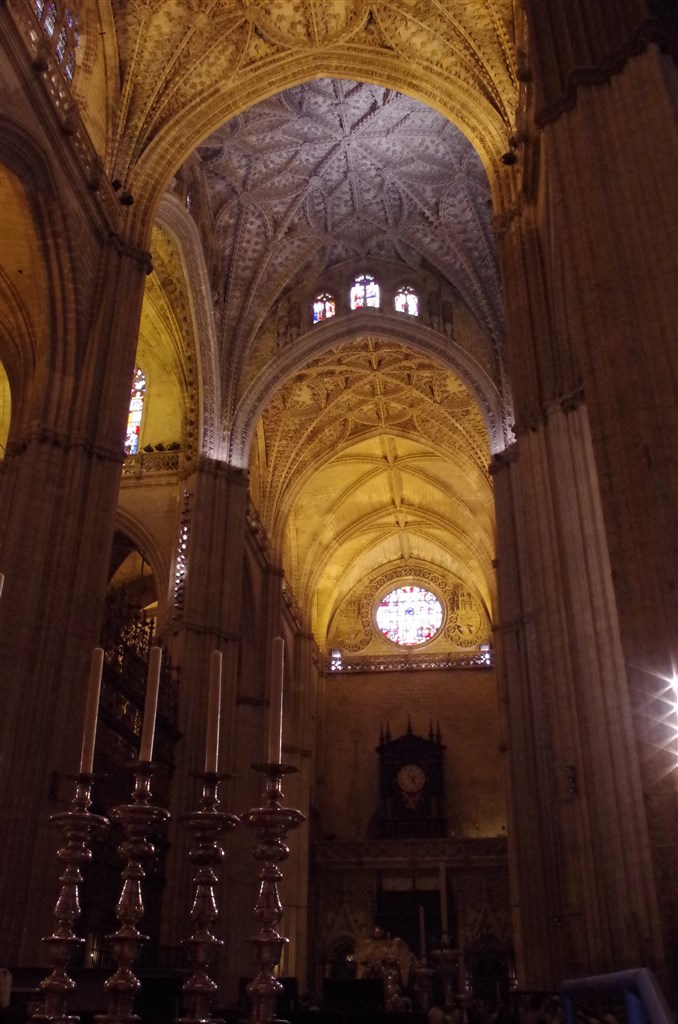
Vaulted ceiling in traditional Christian style will be familar to most who've visited larger churches in Northern Europe.
After we came out, we joined the still long queue for the Real Alcazar.
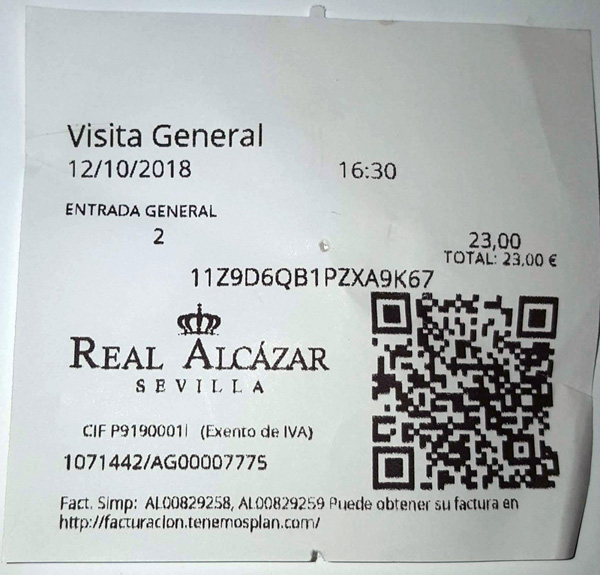
Security stopped people joining it only a few behind us and we wondered if we were going to wait in vain, but after a 1.5 hour queue, we finally got in about 5PM.
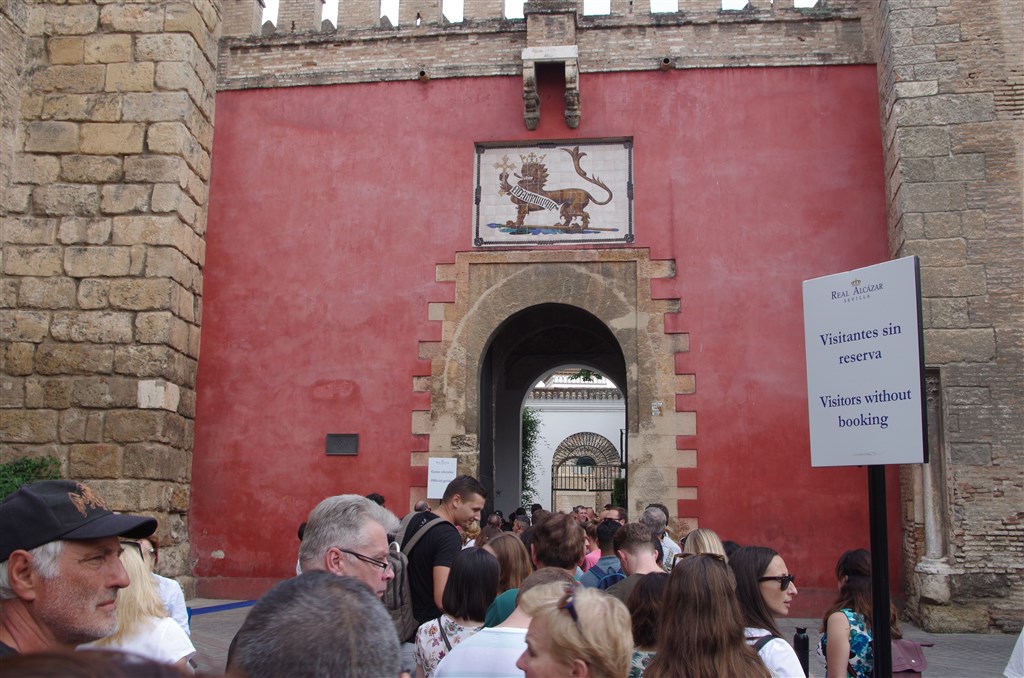
Nearly in - I took this photo in case it was as close as we got to seeing the Real Alcazar!
As the Real shuts at 6, this did mean that our visit was a little rushed, but it was 100% worth seeing (almost worth the queue) with lovely rooms and gardens - Better than the Cathedral for us.
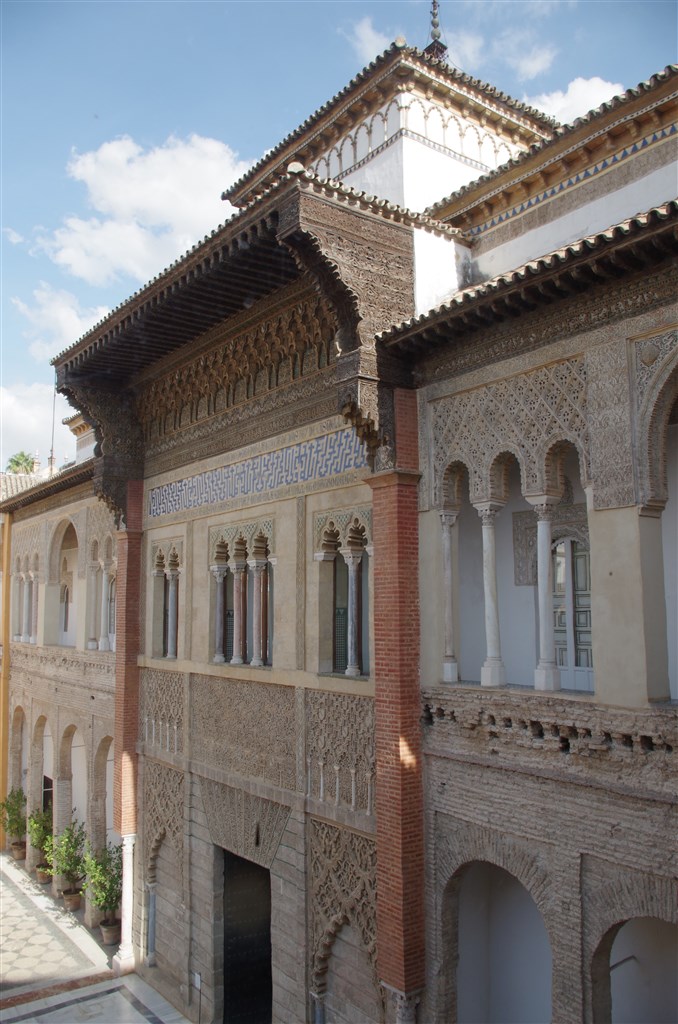
Islamic details on front of part of the Real Alcazar
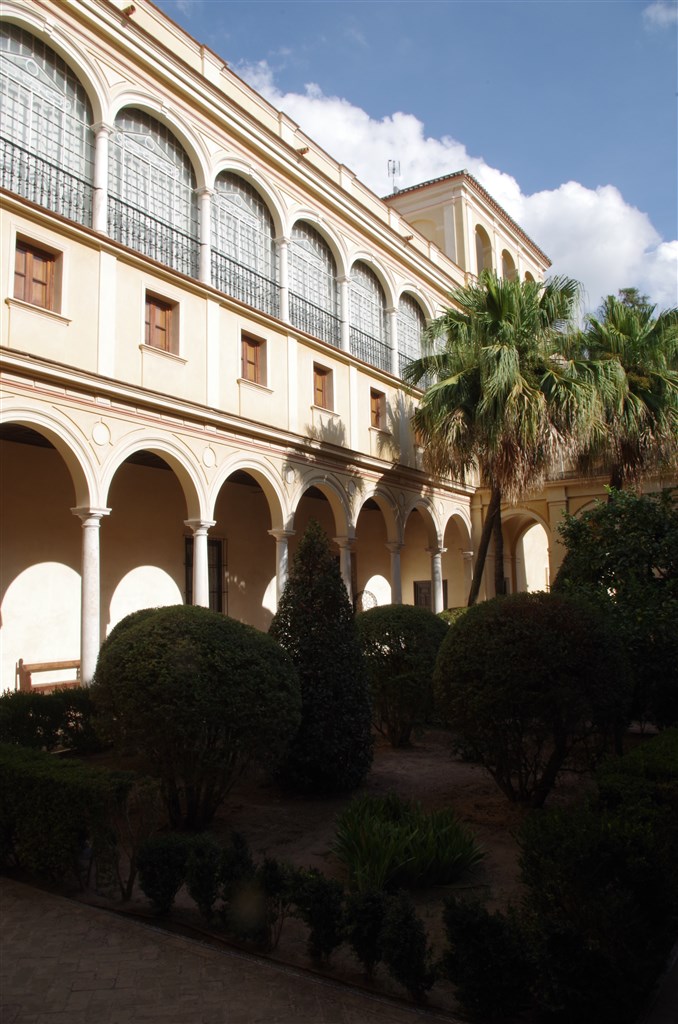
More modern style in other parts.
We walked around the various buildings making up the Real Alcazar,first.
Many were like those in the Alhambra with Arabic arches and the carved and engraved plasterwork on the walls, along with courtyards and pools and ornate doors.
Others were presumably much more modern, being more European in style.
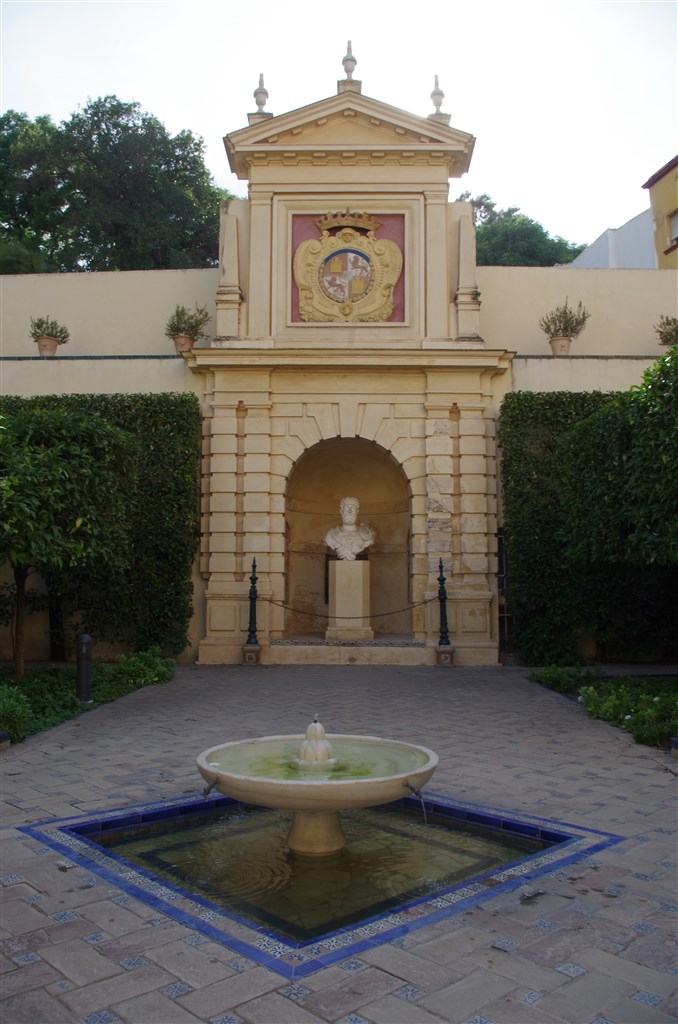
Moorish and mock Roman styles have mixed over the centuries...
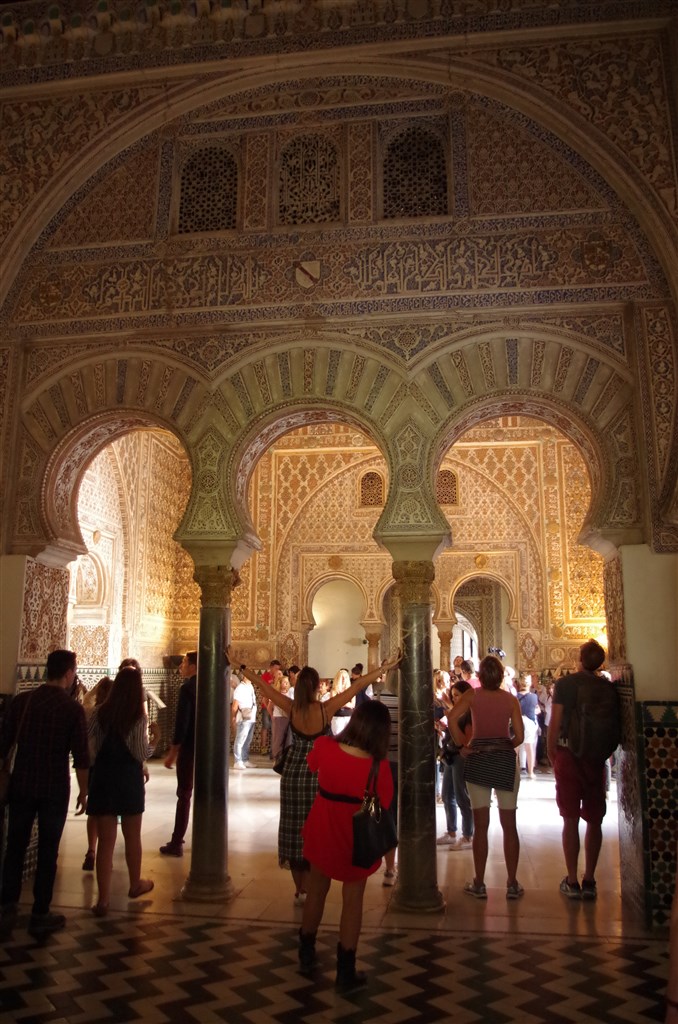
...but inside is as extravagent as the Nasrid Palaces in Granda, perhaps moreso!
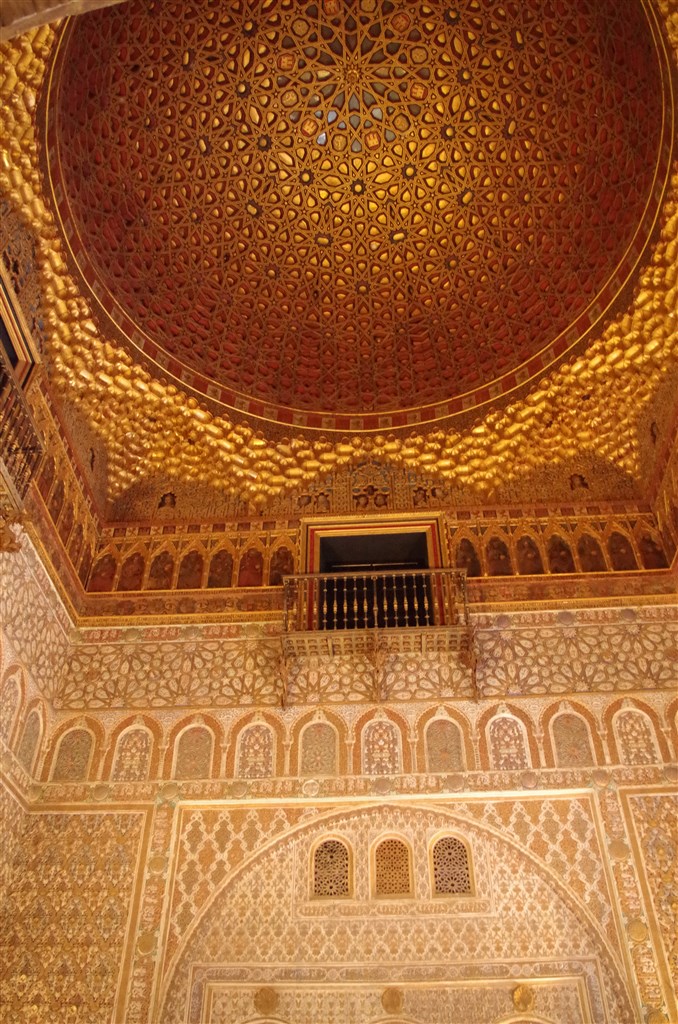
Magnificent room and ceiling.
Some walls were hung with impressive tapestries and long 'French' doors led out onto the extensive gardens.
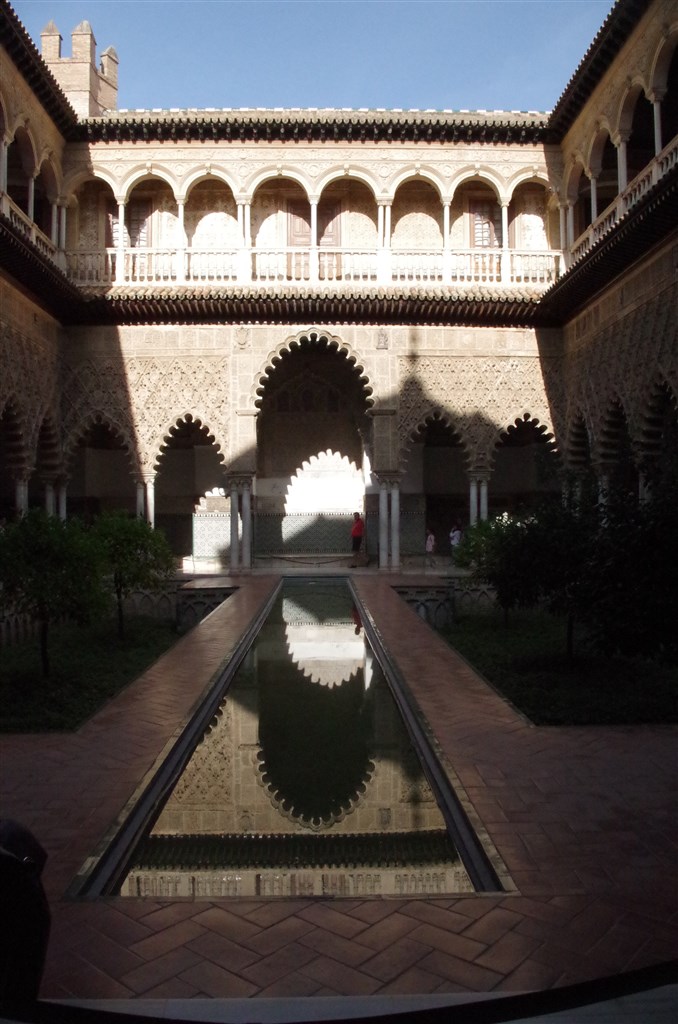
Water features in Courtyards again.
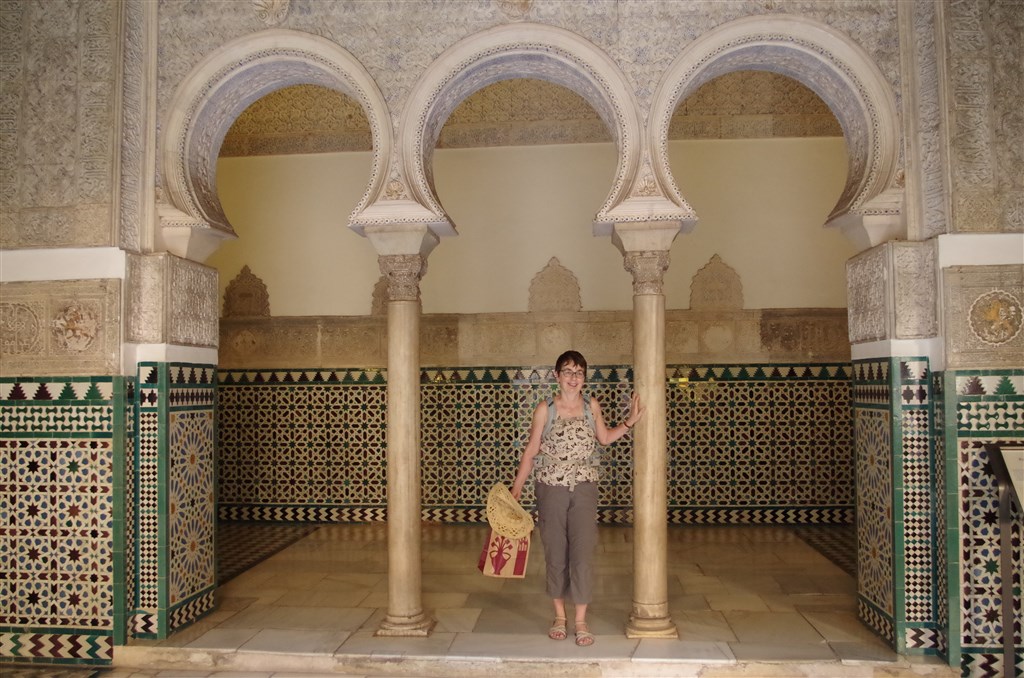
Arabic archways and tiling.
We went out onto the galleried wall, separating an inner and outer garden and then walked around both for a while, enjoying the shade for a while, but, too soon, the time came for us to leave and we were hustled out of the gate as the Real was closed.
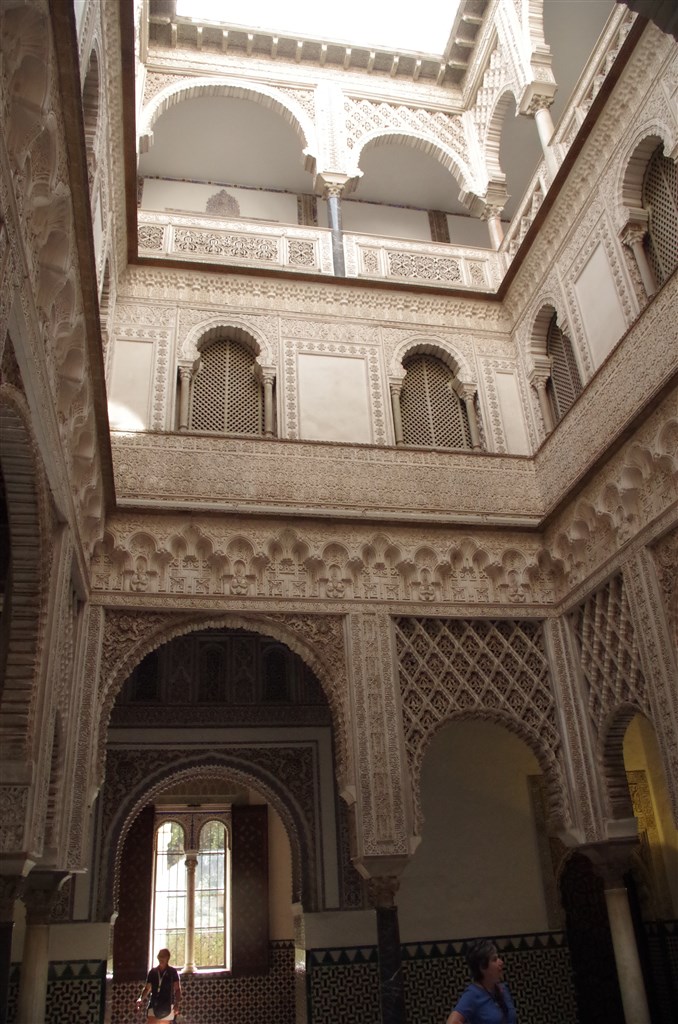
Arches, carved plaster, galleries - Glorious!
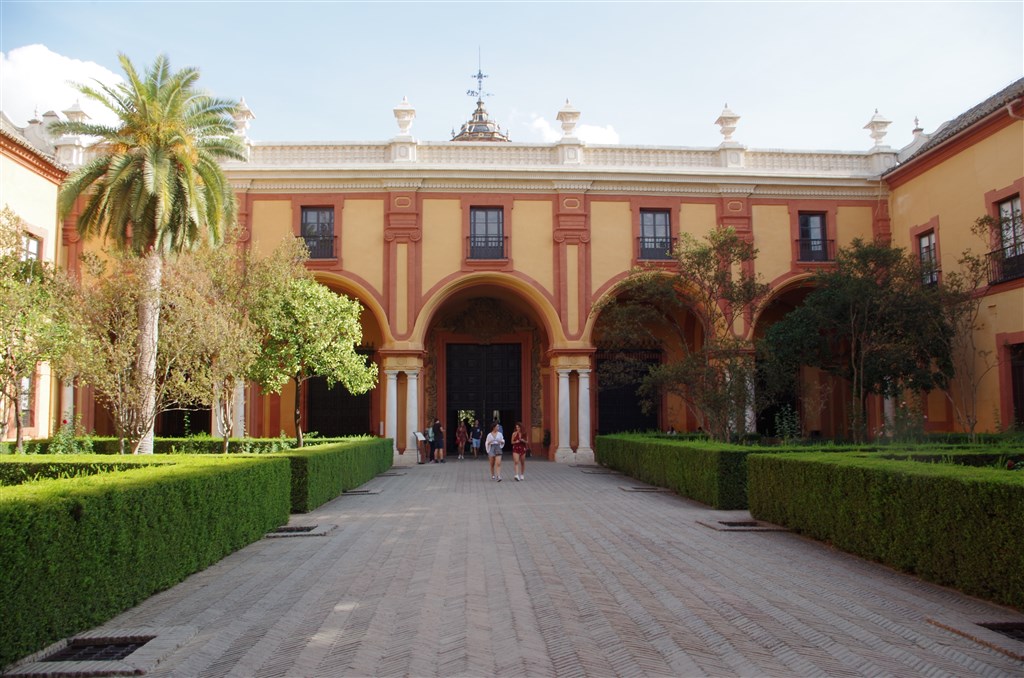
More modern parts added over time.
On reflection, we would far rather have spent another here and less time in the Cathedral, but if you have time to do both, absolutely do. Perhaps it really needs two leisurely afternoons to see the two sites properly.
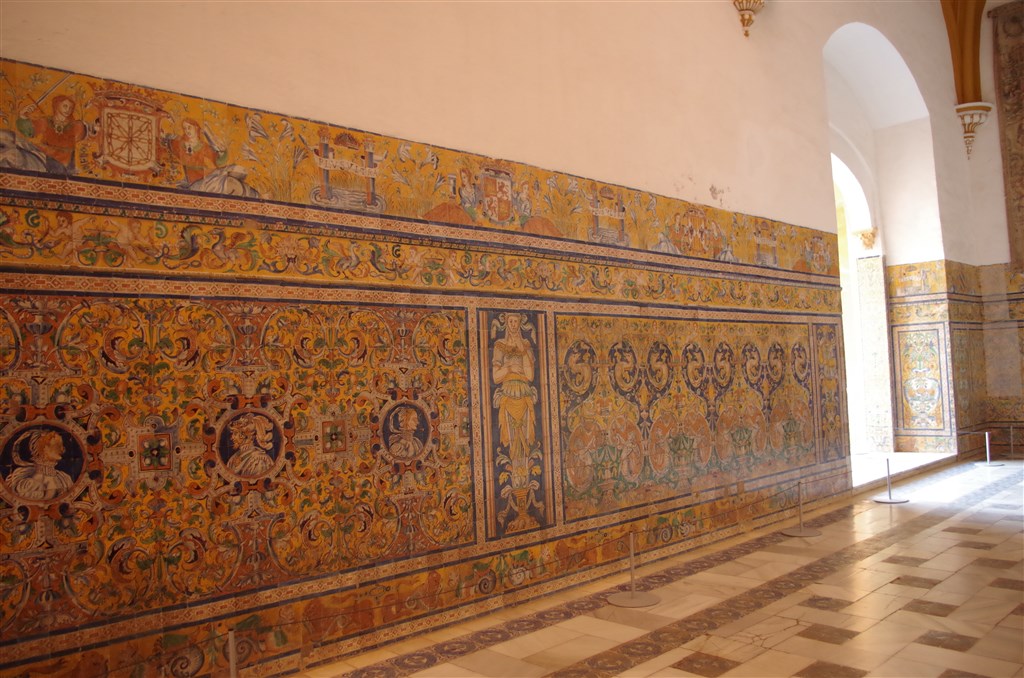
Tiled wall is post Moorish.
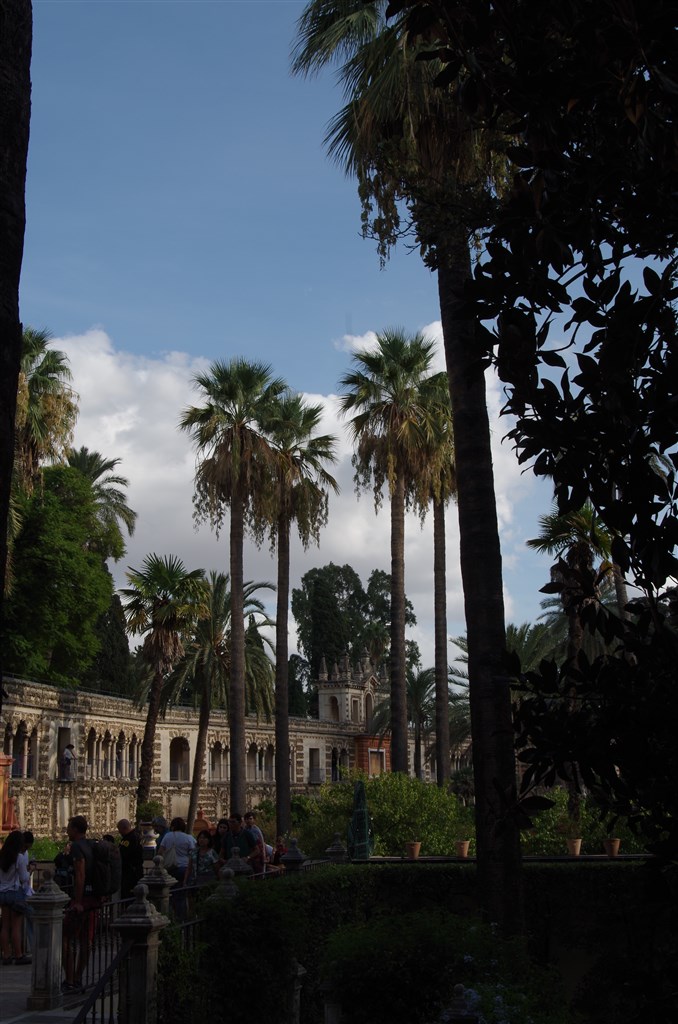
Galleried wall provides separation and viewing of inner and outer gardens.
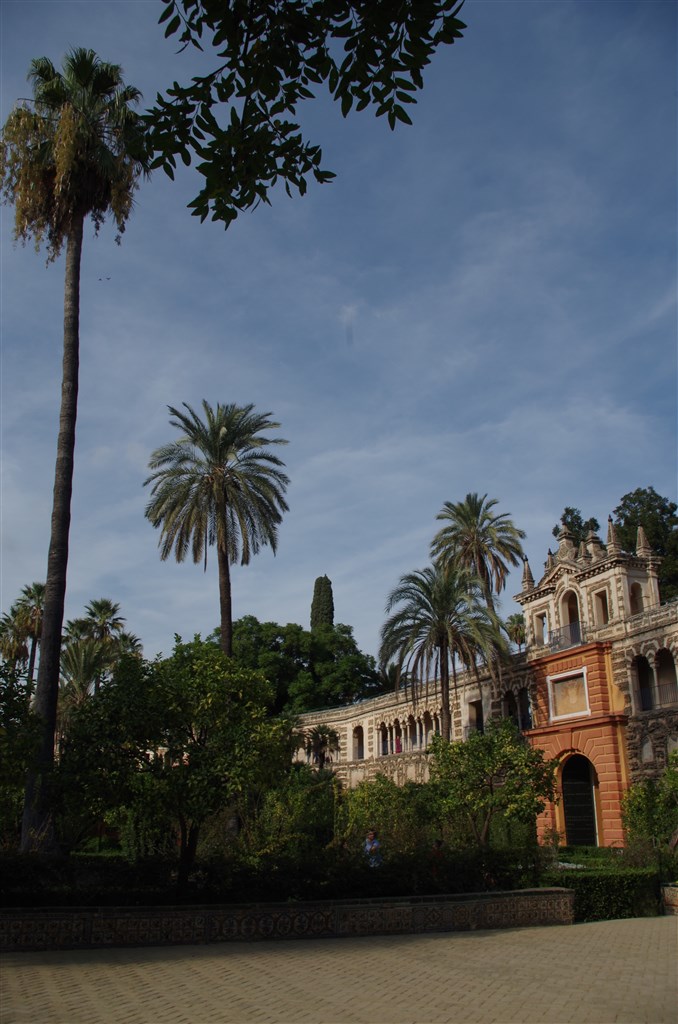
Viewed from inner gardens.
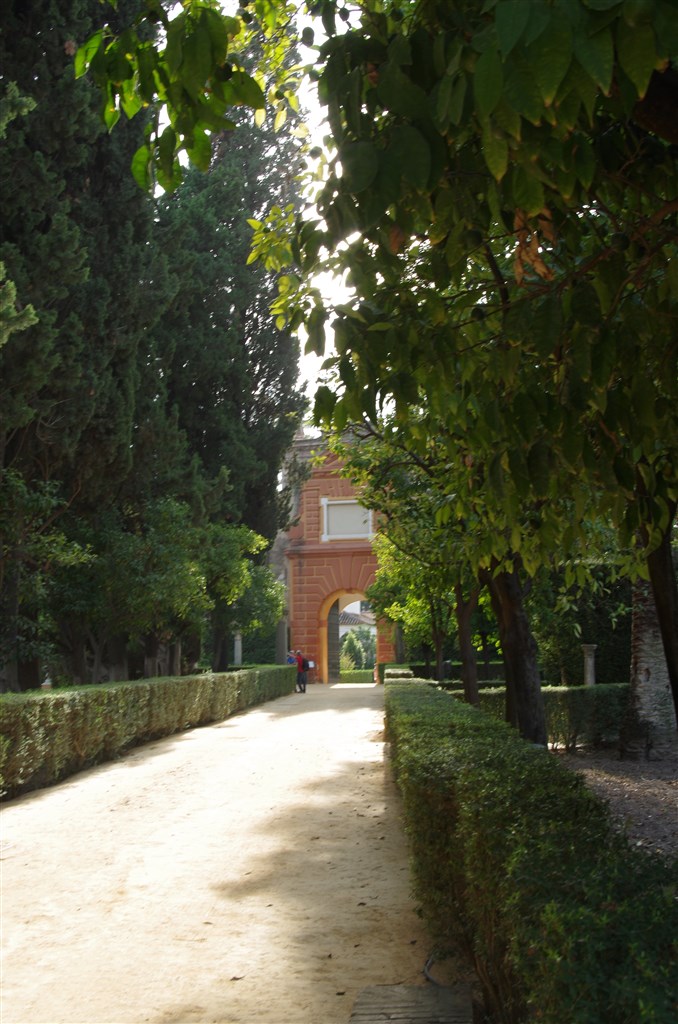
Outer gardens feature tree lined paths and ponds and fountains
We returned to the restaurant we'd had our drink in earlier in the day and enjoyed a Steak dinner and then headed back on the Metro and to our hotel in East Seville.
It was expensive, but so was everywhere in Seville that night and we had a nice appartment style room in a quiet residential area. We probably had our best nights sleep here!
17,077 Steps
Onto the next part of the Spain 2018 Report.
